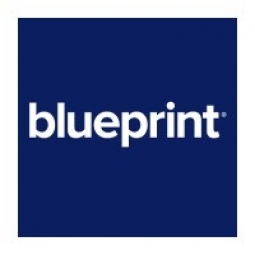下载PDF
Leading Health IT Provider Leverages Blueprint to Bring New Clients Online 50% Faster
技术
- 应用基础设施与中间件 - 数据交换与集成
适用行业
- 医疗保健和医院
适用功能
- 商业运营
- 质量保证
用例
- 过程控制与优化
- 质量预测分析
服务
- 数据科学服务
- 系统集成
挑战
HIT 提供商负责为医疗保健提供商设置电子医疗记录。为此,团队必须手动解析许多不同的应用程序和电子表格,这些应用程序和电子表格以不同的格式设置,甚至可能是纸质的,因此很容易出错,从而导致昂贵的返工。让客户上线也很低效,平均需要 20 个工作日才能让一个客户上线。因此,他们开始了自动化之旅。他们明白,为了有效地扩展他们的自动化计划,他们需要一种工具,能够轻松地从旧版软件和 Excel 文档中提取数据,将这些数据分解为易于理解的模型,并针对自动化进行优化。
关于客户
该客户是一家医疗信息技术 (HIT) 解决方案、服务、设备和硬件的供应商。其产品已在全球 28,000 多家机构使用,拥有 30,000 多名员工。该公司致力于让医疗保健行业更安全、更高效。他们创造的技术有助于做出临床决策并减少医疗错误。该公司年收入为 60 亿美元,自 2018 年以来一直是其客户。
解决方案
HIT 提供商在一个试点项目中利用 Blueprint 的企业自动化套件来访问 Excel 中的关键信息和测试积压工作,而这些积压工作以前是完全无法访问的,因此他们能够全面了解其手动流程的当前状态。然后,他们使用流程建模器分解这些发现的流程,并确定数百个他们正在自动化的 RPA 机会,以扩展他们的 RPA 计划,并让客户在半数时间内上线且没有任何错误。推动自动化成功的企业自动化套件的关键方面包括 BlueDocs 文档导入器、测试脚本挖掘、集中存储库和业务流程建模器。
运营影响
数量效益
相关案例.

Case Study
Hospital Inventory Management
The hospital supply chain team is responsible for ensuring that the right medical supplies are readily available to clinicians when and where needed, and to do so in the most efficient manner possible. However, many of the systems and processes in use at the cancer center for supply chain management were not best suited to support these goals. Barcoding technology, a commonly used method for inventory management of medical supplies, is labor intensive, time consuming, does not provide real-time visibility into inventory levels and can be prone to error. Consequently, the lack of accurate and real-time visibility into inventory levels across multiple supply rooms in multiple hospital facilities creates additional inefficiency in the system causing over-ordering, hoarding, and wasted supplies. Other sources of waste and cost were also identified as candidates for improvement. Existing systems and processes did not provide adequate security for high-cost inventory within the hospital, which was another driver of cost. A lack of visibility into expiration dates for supplies resulted in supplies being wasted due to past expiry dates. Storage of supplies was also a key consideration given the location of the cancer center’s facilities in a dense urban setting, where space is always at a premium. In order to address the challenges outlined above, the hospital sought a solution that would provide real-time inventory information with high levels of accuracy, reduce the level of manual effort required and enable data driven decision making to ensure that the right supplies were readily available to clinicians in the right location at the right time.

Case Study
Gas Pipeline Monitoring System for Hospitals
This system integrator focuses on providing centralized gas pipeline monitoring systems for hospitals. The service they provide makes it possible for hospitals to reduce both maintenance and labor costs. Since hospitals may not have an existing network suitable for this type of system, GPRS communication provides an easy and ready-to-use solution for remote, distributed monitoring systems System Requirements - GPRS communication - Seamless connection with SCADA software - Simple, front-end control capability - Expandable I/O channels - Combine AI, DI, and DO channels

Case Study
Driving Digital Transformations for Vitro Diagnostic Medical Devices
Diagnostic devices play a vital role in helping to improve healthcare delivery. In fact, an estimated 60 percent of the world’s medical decisions are made with support from in vitrodiagnostics (IVD) solutions, such as those provided by Roche Diagnostics, an industry leader. As the demand for medical diagnostic services grows rapidly in hospitals and clinics across China, so does the market for IVD solutions. In addition, the typically high cost of these diagnostic devices means that comprehensive post-sales services are needed. Wanteed to improve three portions of thr IVD:1. Remotely monitor and manage IVD devices as fixed assets.2. Optimizing device availability with predictive maintenance.3. Recommending the best IVD solution for a customer’s needs.

Case Study
HaemoCloud Global Blood Management System
1) Deliver a connected digital product system to protect and increase the differentiated value of Haemonetics blood and plasma solutions. 2) Improve patient outcomes by increasing the efficiency of blood supply flows. 3) Navigate and satisfy a complex web of global regulatory compliance requirements. 4) Reduce costly and labor-intensive maintenance procedures.

Case Study
Harnessing real-time data to give a holistic picture of patient health
Every day, vast quantities of data are collected about patients as they pass through health service organizations—from operational data such as treatment history and medications to physiological data captured by medical devices. The insights hidden within this treasure trove of data can be used to support more personalized treatments, more accurate diagnosis and more advanced preparative care. But since the information is generated faster than most organizations can consume it, unlocking the power of this big data can be a struggle. This type of predictive approach not only improves patient care—it also helps to reduce costs, because in the healthcare industry, prevention is almost always more cost-effective than treatment. However, collecting, analyzing and presenting these data-streams in a way that clinicians can easily understand can pose a significant technical challenge.






